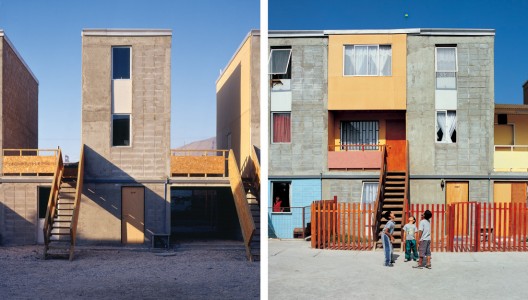There has been much debate over slums, whether or not the entire system in itself is a legitimate community or not. Many slums--also known as squatter-cities, shantytowns, and informal settlements--have little to no infrastructure, where the residents simply have to live without or improvise.
However, despite the poor veneer of these communities, architects and urban planners are noticing that these shantytowns have elements of what defines smart-growth: close-knit, pedestrian friendly communities where buildings are usually multi-use. The buildings themselves are usually salvaged from neighbouring communities' debris, which is an eco-solution to building materials.
More after the jump,
-Dennis
Although many slums are still high in terms of crime rate, there are some where the rate is extremely low. The fact that the streets are very narrow and pedestrian friendly, combined with the intimacy of the architecture, the residents have a strong sense of community. Likewise, there is also a control in population growth, as children are burden on these communities.
As the architects and planners see these trends in slums are similar to their future goals, there have been proposals that hope to link these positive characteristics to our modern world. In a suburban gentrification competition called Reburbia, the people's choice entry titled Urban Sprawl Repair Kit: Repairing the Urban Fabric by Galina Tahchieva outlines the issues based upon the urban sprawl machine. By adding onto the existing buildings of the suburb with street-friendly façades, food producing green roofs, and remodeling suburban homes to become more integrated into the street for citizens, Tahchieva envisions a practical and elegant solution to the growing problem of the inefficient suburb.
 Quinta Monroy, taken from ArchDaily
Quinta Monroy, taken from ArchDaily
A Chilean architecture firm known as Elemental produced a different solution. Their native government presented them with a problem: providing a permanent home for the 100 families of the Quinta Monroy, a location that is now a network of social housing. The solution was to create a system of identical 30 sq. m. rowhouses throughout the area, and leaving spaces so the residents are free to redesign and build to their needs, at their own pace. The result was extremely successful, as Elemental wishes to see social housing as an investment, not an expense.
xoxo
Dennis Tang
===
Works Cited
Castroni, Marco. "Learning from the slums (1/2):literature and urban renewal | ArchDaily." ArchDaily | Broadcasting Architecture Worldwide. http://www.archdaily.com/15271/learning-from-the-slums-12literature-and-urban-renewal/ (accessed November 12, 2009).
Castroni, Marco. "Learning from the slums (2/2): the rediscovery | ArchDaily." ArchDaily | Broadcasting Architecture Worldwide. http://www.archdaily.com/16311/learning-from-the-slums-22-the-rediscovery/ (accessed November 12, 2009).
Saieh, Nico. "Quinta Monroy / Elemental | ArchDaily." ArchDaily | Broadcasting Architecture Worldwide. http://www.archdaily.com/10775/quinta-monroy-elemental/ (accessed November 12, 2009).
Tahchieva, Galina . "Urban Sprawl Repair Kit: Repairing The Urban Fabric." ReBurbia. http://www.re-burbia.com/2009/08/04/sprawl-building-types-repair-toolkit/ (accessed November 12, 2009).
Tuhus-Dubrow, Rebecca . "The world's slums are overcrowded, unhealthy - and increasingly seen as resourceful communities that can offer lessons to modern cities. - The Boston Globe." Boston.com. http://www.boston.com/bostonglobe/ideas/articles/2009/03/01/learning_from_slums/?page=1 (accessed November 12, 2009).



No comments:
Post a Comment